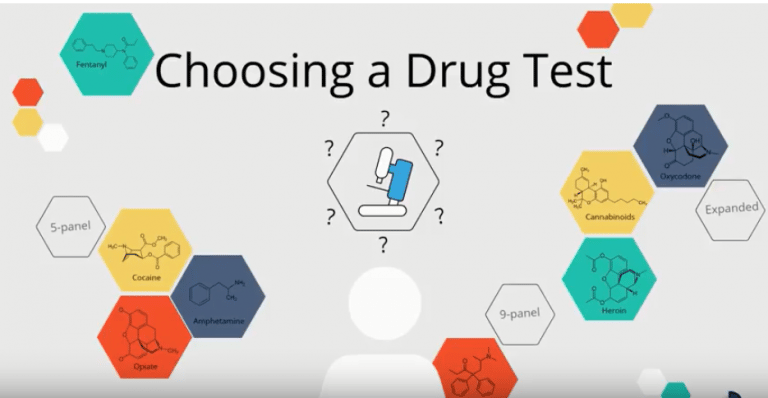When it comes to drug testing your employees. It isn’t as simple as sending a sample to the lab and saying, “Show me the drugs.” Drug testing doesn’t work like that. It can only test for what you tell it to test for. That means you need to decide ahead of time what drugs you want to include in your test. But how do you do that?
For starters you need to consider the testing requirements of any authorities you are subject too. For example, if you have employees mandated by the Department of Transportation DOT. You’re required to test for a specific lists of drugs and no more. But heads up this list changed as of January 1st 2018. Prior to January 1st DOT required covered employees to be tested for amphetamines including ecstasy, cocaine, cannabinoids, PCP and opiates. But only organic opiates meaning those that come from the poppy plant. Illegal drugs like heroin, opium and prescription painkillers such as codeine and morphine. Starting January 1st DOT requires you to add four semi-synthetic painkillers: oxycodone (e.g., oxycontin), oxymorphone (e.g., Opana) hydrocodone (e.g., Vicodin) hydromorphone (e.g., Dilaudid)
Even if you are not mandated by DOT testing for this list of drugs at minimum is prudent but it’s best practice for you to add a few more commonly misused drugs: Barbiturates (like phenobarbital), Benzodiazepines (which are tranquilizers including Valium, and Librium), Methadone and Propoxyphene which isn’t even manufactured anymore.
One of the most common drug test panels is the 5 panel drug test which includes: Marijuana (THC), Cocaine (COC), Opiates (OPI), Amphetamines (AMP), and PCP. This is used by employers and for probation drug testing.
Remember the lab test will only test for what you tell it to test for. So the first thing you need to know is what you’re already testing for and it’s a good idea to get that list in writing from your drug testing vendor. Then talk with your vendor. Ask questions. Clearly articulate what you are interested in purchasing. And of course don’t forget that it’s vital to have a medical review officer in the testing process especially when it comes to prescription meds. This protects employees from testing positive for medications they are taking legitimately, appropriately and protects you the employer from finding out medical information you might not have a right to know.
Finally it’s always important that you formally tell your employees what substances they’re going to be tested for, the cutoff level for each drug that will result in a positive test, under what circumstances they’ll be tested, what they can do if they feel their test results are inaccurate and what will happen if they do have a confirmed positive result.
Make sense? Taking this extra step to identify prescription drug abuse is a step toward a safer healthier and more productive workforce. And if you want help anywhere along the way you can always reach out to us we’d be happy to help.
Thanks to our friends at Working Partners for sharing this video and information with our clients and NDS Blog visitors. Working Partners® assists Ohio companies to create the right type of drug-free workplace (DFWP) program for their unique needs. Their expertise and insight can help you tailor a drug-free workplace program that will work for your company. To reach Working Partners visit www.WorkingPartners.com







